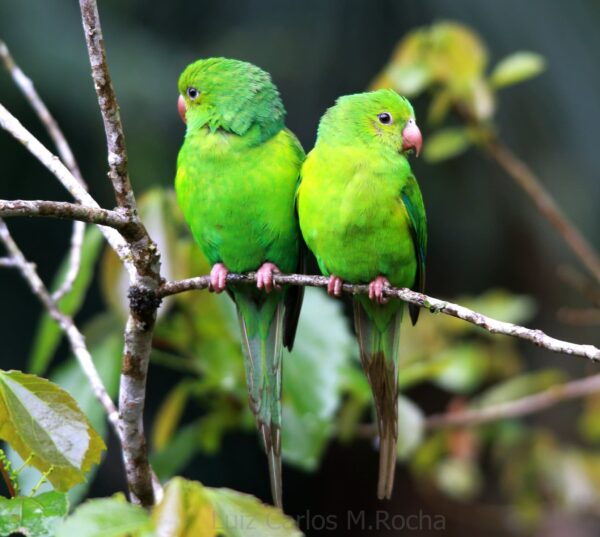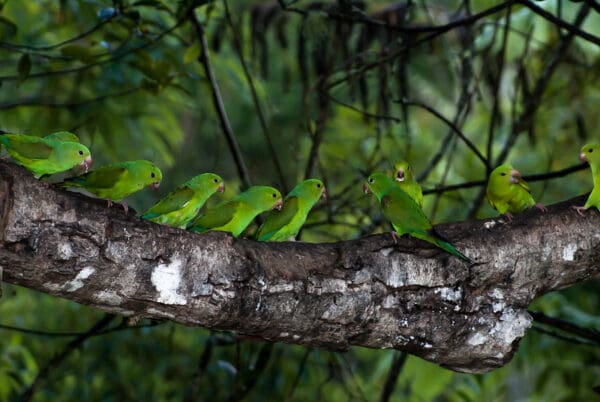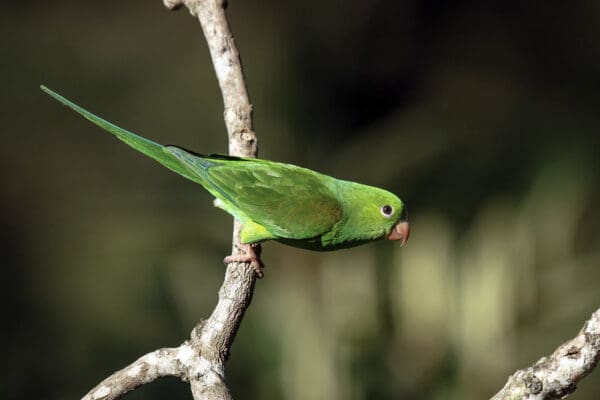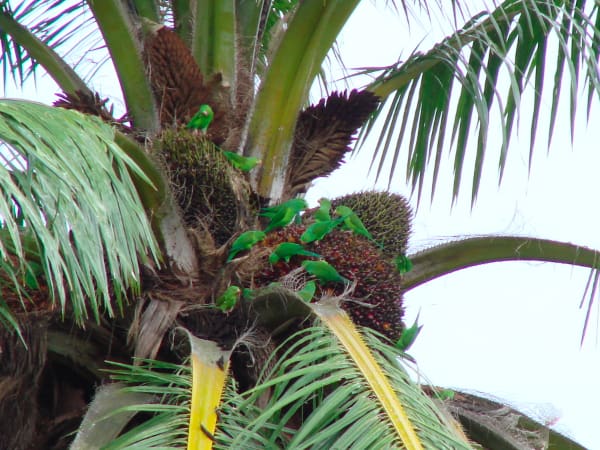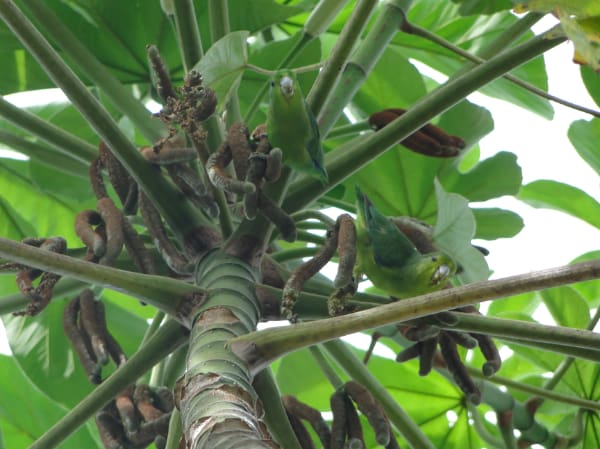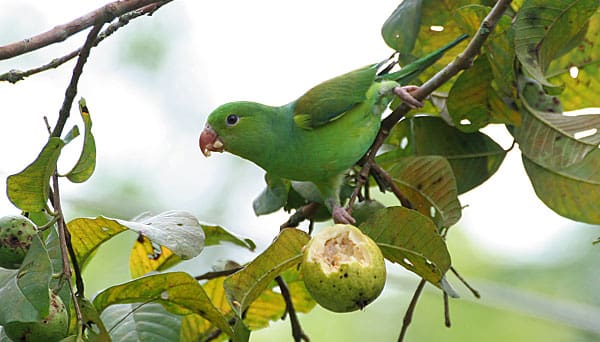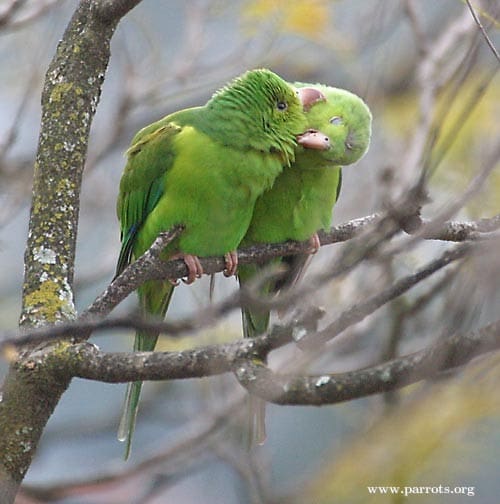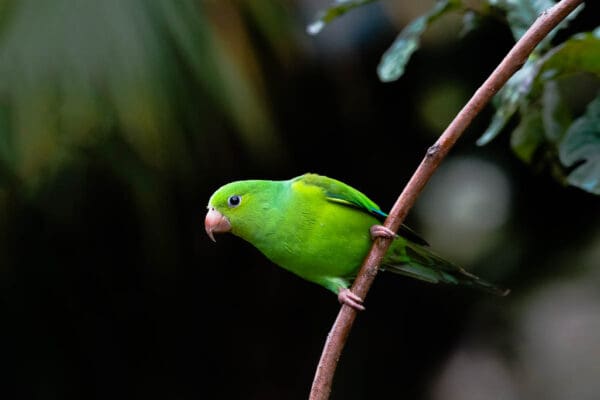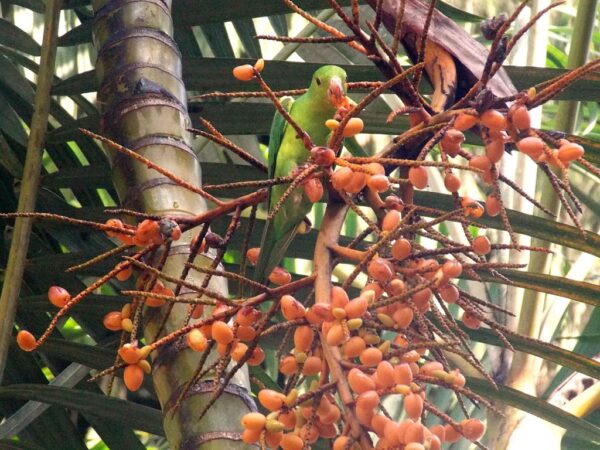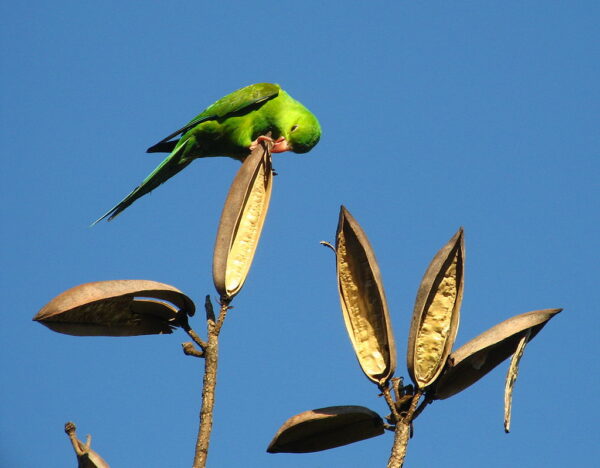Plain Parakeet
Also known as:
All-green Parakeet, Tirica Parakeet
Also known as:
All-green Parakeet, Tirica Parakeet
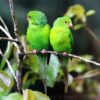
![© Alberto Rossettini [CC BY-NC 2.0] via Flickr Wild Plain Parakeets perch on a tree trunk](https://parrots.org/wp-content/uploads/2023/01/wpt_Plain-Parakeet_1374-28-100x100.jpg)
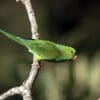
![© Dario Sanches [CC BY-SA 2.0] via Wikimedia Commons A wild Plain Parakeet feeds on fruits](https://parrots.org/wp-content/uploads/2023/01/wpt_Plain-Parakeet_1374-16-100x100.jpg)
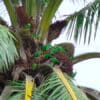
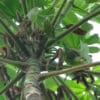
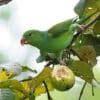
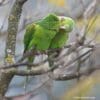
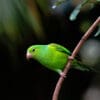

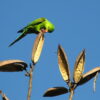
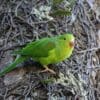
DID YOU KNOW?
The Plain Parakeet nests in arboreal termitaria (termite mounds in trees), palm crowns, natural tree hollows or, if in urban areas, crevices in buildings.

Brotogeris

tirica
Size:
23 cm (9 in)
Weight:
65 g (2.3 oz)
Subspecies including nominate:
one
Colour Adult:
Both adults in general green with yellow on crown, cheeks and underparts; olive/brown bend of wing and lesser wing coverts; dull purple/blue primary coverts, primary feathers and outer secondary feathers edged with green. Beak brown, becoming horn-coloured towards base. Eye dark brown.
Colour Juvenile:
As in adults but with green primary coverts, primary feathers and outer secondary feathers, tinted with blue. Shorter tail. Upper mandible brown at base.
Call:
Calls made in flight are shrill and rolling screeches with occasional harsh, two syllable rasping notes while feeding or resting.
More Information:
Content Sources:
CITES
BirdLife International
Cornell Lab of Ornithology/Birds of the World
A Guide to Parrots of the World, Juniper and Parr, 1998
Parrots of the World, Forshaw and Cooper, 1977. 2010 edition
Parrots of the World, Forshaw, 2006.
Lexicon of Parrots, Thomas Arndt.
Parrots in Aviculture, Low, 1992.
Captive Status:
Rare
Longevity:
Probably 10-15 yrs, as in other Brotogeris sp.
Housing:
Aviary for one pair: 2 x 1 x 2 m (6.5 x 3.3 x 6.5 ft).
Diet:
Fruits such as: apple, pear, banana, cactus fruits, oranges, pomegranate, kiwi, mango, forming about 30 percent of diet; vegetables (if taken) such as: carrot, celery, green beans, peas in the pod; fresh corn; green leaves such as: Swiss chard, lettuce, sowthistle, dandelion, chickweed; spray millet; small seed mix such as: canary, millet and smaller amounts of oats, buckwheat, safflower and a little hemp; soaked and sprouted sunflower seed; cooked beans and pulses, boiled maize, and complete pellet.
Enrichment:
Avid flier and chewer, so provide space and plenty of bird-safe, unsprayed flowering, fir, pine and willow branches; different sized perches; wooden chew toys, vegetable tanned leather toys; rope, swings and ladders.
Nest Box Size:
Vertical box 7″ x 7″ x 24″ (17.8 cm x 17.8 cm x 61 cm).
Clutch Size:
4-6
Fledging Age:
38 days
Hatch Weight:
—
Peak Weight:
—
Weaning Weight:
—
World Population:
Unknown, decreasing.
IUCN Red List Status:
Least Concern
CITES Listing:
Appendix II
Threat Summary:
Common in many parts of its range; likely stable in numbers after centuries of slow decline from loss of forest habitat. Is considered to have a medium dependency on forest habitat, and tree cover is estimated to have declined by 12.2% within its range over the past three generations. Therefore it is tentatively suspected that this may have led to a 1-19% decline in the species’ population over the same period.
Range:
CE and SE Brazil.
Habitat:
Found up to 1200 m (3936 ft) in lowlands and uplands, forest canopy and forest edge, parks and gardens and city plazas with mature trees, farmland with trees, scattered woodlots and patches of secondary growth.
Wild Diet:
Feeds on fruit pulp of Posoqueria latifolia, seeds of Ficus glabra, Trema micrantha, Xylopia brasiliensis, Vriesea, Rhipsalis, Cecropiavideo glazioui, Hieronyma alchorneoides, Merostachis, seeds and flowers of Tibouchina mutabilis and mistletoe Psittacanthus, flowers of Norantea brasiliensis and Eucalyptus, nectar of Pseudobombax, and possibly insects and their larvae.
Ecology and Behaviour:
Social. Found in pairs or small flocks. Rarely in large groups of several hundred. Climbs branches while feeding rather than fluttering from branch to branch.
Clutch and Egg Size:
4-6 rounded eggs, 25.5 x 21.5 mm (1 x 0.8 in).
Breeding Season:
Likely September-December; nest is in tree cavity.
Related Links:
—
